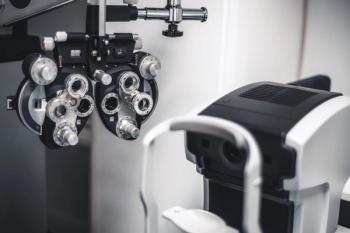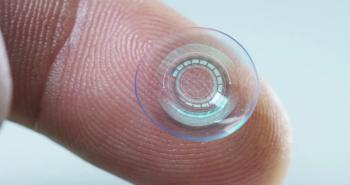
Long-term exposure to urban particulate matter causes meibomian gland damage
Urban particulate matter contains a variety of heavy metals, endotoxin, nitrogen oxides, and polycyclic aromatic hydrocarbons, which have been found to be genotoxic, mutagenic, and carcinogenic.
Chinese investigators have reported evidence of the toxic effects of urban particulate matter (UPM) in meibomian gland dysfunction (MGD). First authors Mengqian Tu, MD and Ren Liu, MD, from the State Key Laboratory of Ophthalmology, Zhongshan Ophthalmic Center, Sun Yat-Sen University, Guangdong Provincial Key Laboratory of Ophthalmology and Visual Science, Guangzhou, China, reported their results in Investigative Ophthalmology and Visual Science.1
They explained that epidemiologic evidence has shown that the meibomian glands (MG) potentially can be damaged by UPM; however, the mechanism of the damage has not been determined up to now.
In emphasizing the importance of this study, they stated,“UPM carries various toxic substances, including heavy metals, endotoxin, nitrogen oxides, and polycyclic aromatic hydrocarbons,2 which have been found to be genotoxic, mutagenic, and carcinogenic and can induce severe inflammatory responses in multiple human organs.3 Extensive research has shown a strong correlation between air pollutants and higher rates of respiratory and cardiovascular diseases, leading to increased mortality and morbidity.4,5 Additionally, the economic burden associated with these health conditions is substantial.”6
The investigators conducted an experimental study of the effects of UPM in female C57BL/6J mice that were treated with eye drops containing UPM suspension or phosphate buffered saline for 14 days.
In this study, UPM caused a number of changes in the mice. The investigators observed MGD-like clinical signs, ie, distinct corneal epithelial erosion, increased MG orifice occlusion, and glandular dropout.
“The exposure of the MGs to the particulates significantly induced progenitor loss, cell death, and lipogenic disorder by reducing P63/Lrig1 expression and increasing cleaved caspase-8, -9, and -3 and meibum lipogenic protein expression. The actively treated mice exhibited ductal hyperkeratinization and neutrophil recruitment. Pyroptosis also developed, as indicated by the heightened expression of NLRP3 and the cleavage of caspase-1 and -4 and gasdermin D, as well as the increase in interleukin IL-1β and IL-18 downstream. The underlying pathological mechanisms of UPM involve the phosphorylation of mitogen-activated protein kinase and nuclear factor-κB,” the authors reported.
“Our results demonstrated that long-term exposure to UPM remarkedly impaired ocular health, and caused structural and functional damage to the MG. UPM exposure strongly activated the pyroptosis pathway along with strong stimulation of inflammatory reactions. This study is the first to elucidate the involvement of UPM in MG degeneration, and identify the major roles of pyroptosis and the related inflammatory response in UPM-induced MGD,” they continued.
The research team believes the results may lead to development of clinical treatments for environment-related eye diseases.
References:
Tu M, Liu R, Xue J, et al. Urban particulate matter triggers meibomian gland dysfunction. Invest Ophthalmol Vis Sci. 2024;65; doi:
https://doi.org/10.1167/iovs.65.2.8 Loxham M, Nieuwenhuijsen MJ. Health effects of particulate matter air pollution in underground railway systems - a critical review of the evidence. Part Fibre Toxicol. 2019;16:12.
de Oliveira Alves N, Martins Pereira G, Di Domenico M, et al. Inflammation response, oxidative stress and DNA damage caused by urban air pollution exposure increase in the lack of DNA repair XPC protein. Environ Int. 2020; 145: 106150.
Samek L. Overall human mortality and morbidity due to exposure to air pollution. Int J Occup Med Environ Health. 2016;29:417–426.
Yorifuji T, Kashima S, Doi H. Associations of acute exposure to fine and coarse particulate matter and mortality among older people in Tokyo, Japan. Sci Total Environ. 2016;542:354–359.
Kelly FJ. Urban air quality and health: two steps forward, one step back.Eur Respir J. 2019; 53: 1900280.
Newsletter
Want more insights like this? Subscribe to Optometry Times and get clinical pearls and practice tips delivered straight to your inbox.















































